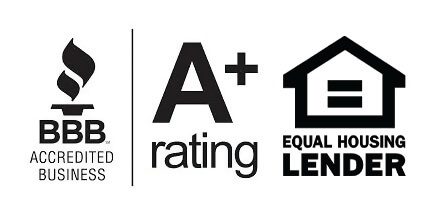NEWS: Today’s New Buyers Want Smaller Houses, Closer In
Lew Sichelman
May 10, 2019
In something of a throwback to the 1920s, a new minimalist trend, in which less is more, may soon be taking hold in new-home design. At the same time, some builders will be heading deeper into urban and close-in suburban spots where location will be the primary amenity.
These two possible trends, predicted at the recent National Association of Home Builders convention in Las Vegas, are not likely to change the face of new-home construction. But if they are on the money, at least some builders will be simplifying their designs to capture buyers suffering from sensory overload, while others will build smaller houses on smaller lots in an effort to bag young buyers who are paying in rent what they could pay to own.
The minimalist trend is “in its very early stages,” according to Renee Labbe, director of foresight strategy at Broadside Studios in Los Angeles. But in that it stems from the need to provide a respite from buyers’ overstimulated modern lives, it can’t arrive quick enough.
“We are all subjected to an exceptional amount of technology, social media, visual messaging, infomercials and the like, and that has caused people to lose focus,” Labbe says. “Our brains have become so busy that we need to reduce friction.”
For home design, that means a reduction to simpler floor plans, and to modestly pitched roofs with minimal overhangs and reduced ornamentation — or none at all, says Labbe, who calls the shift “design reduction.”
In a sense, it will be a return to a style of architecture popular nearly a century ago, when houses were sheathed in just one material, including the roof, and in just one color.
“It will be somewhat similar to a simple barn house,” Labbe explains. “The trend offers consumers a ‘visual ease’ wherein the details that comprise the total aesthetic are reduced for the express purpose of greater overall unity. Detail will exist, but it won’t detract from the whole.”
At the same time, Labbe sees the boundaries between architecture and nature blurring, so there will be less noticeable difference between the two. Landscaping will become less showy and more relaxing, she says — less manicured, more primitive and raw.
And in another predicted trend, which the foresight strategist labels “priva-see,” she says the focus will be on achieving a balance between providing a sense of freedom — a feeling of being outside — while increasing privacy between the house and the world beyond.
Meanwhile, John Hunt of MarketNSight, a feasibility assessment firm, points out that if builders want to recapture the share of the market they have lost to the resale sector — 35 percent all of buyers used to purchase new units, and now just 8 percent do — they have to build closer in, not farther out.
Hunt believes millennials are willing to buy and live in small spaces, as long as the homes are in their target areas. “For many of today’s potential new-home buyers,” he says, “experiences and location trump square footage.” And they are not alone: Boomers are vying for the same houses.
Builders and developers aren’t currently building the homes that first-time buyers and retirees want, or where they want them, he said.
“We’re still building the same houses we built 40 years ago,” he said. “We need to build something different.”
Not every buyer wants to “drive until they can buy,” he points out. Many want to live in trendy locations where they can walk to food and entertainment options. Their major concern isn’t schools; it’s convenience to work and nightlife, or where they can grab an Uber or Lyft.
Right now, this “potentially huge” market is being served by apartment builders. But Hunt says builders can offer more space for the same price — and make a higher profit, to boot: “We have seen small product garnering as much as $450 a square foot.”
He’s talking townhouses, for sure, but also condominiums, and even “micro homes” of 500 square feet or less. Hunt says millennials are willing to pay higher prices for smaller spaces, as long as they are in their preferred locations.
As he sees it, it’s not the lack of demand that is keeping builders in the ‘burbs; it’s the fear of not being able to obtain the right price. But he has case study after case study that shows builders can make their price points, or even more.
In one hot Atlanta neighborhood, for example, one builder is hoping to build stacked flats that will start at $180,000 for 400 square feet. The mortgage on the smallest unit would run $750 a month, which compares favorably to $1,600 a month in rent for a 560 square-foot apartment across the street.
“The apartment market has shown us the way, if we are willing to listen,” says Hunt, a 30-year veteran of the housing wars. “We can compete with them.”
https://www.uexpress.com/housing-scene/2019/5/10/todays-new-buyers-want-smaller-houses






